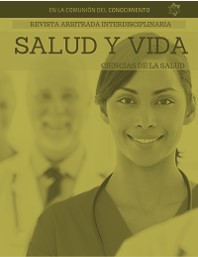Risk factors for carpal tunnel syndrome in postharvest floriculture
DOI:
https://doi.org/10.35381/s.v.v6i2.2084Keywords:
Burnout, psychological, stress, occupational health. (Source, DeCS).Abstract
Objective: To prove that workers who have repetitive activities in their jobs are more prone to present this syndrome, as opposed to workers who do not have many repetitive tasks in their work area. Methods: Descriptive observational study. Results: The majority (58.7%) were male, while 41.3% were female. Conclusion: This syndrome presented a higher prevalence in women and in people with an age range of 40 years or more, being also present in other people, but with a lower prevalence percentage. The OCRA and RULA checklist methods made it possible to obtain a score that measured the ergonomic risk to which the workers were subjected during their daily workday.
Downloads
References
Middleton SD, Anakwe RE. Carpal tunnel syndrome. BMJ. 2014;349:g6437. doi:10.1136/bmj.g6437
Wang L. Guiding Treatment for Carpal Tunnel Syndrome. Phys Med Rehabil Clin N Am. 2018;29(4):751-760. doi:10.1016/j.pmr.2018.06.009
Padua L, Coraci D, Erra C, et al. Carpal tunnel syndrome: clinical features, diagnosis, and management. Lancet Neurol. 2016;15(12):1273-1284. doi:10.1016/S1474-4422(16)30231-9
Grijalva, M. (2017). Determinación del riesgo ergonómico en los trabajadores del área de postcosecha de una empresa florícola y planteamiento de medidas correctivas [Determination of ergonomic risk in workers in the post-harvest area of a flower company and proposal of corrective measures].
https://repositorio.uisek.edu.ec/handle/123456789/2567
García Parra GC, Gómez Eslava AF, González Artunduaga EA. Síndrome del túnel del carpo [Carpal tunnel syndrome]. Morfolia [Internet]. 2009;1(3). Disponible en: https://revistas.unal.edu.co/index.php/morfolia/article/view/10857
Balbastre Tejedor Maribel, Andani Cervera Joaquín, Garrido Lahiguera Ruth, López Ferreres Agustín. Análisis de factores de riesgo laborales y no laborales en Síndrome de Túnel Carpiano (STC) mediante análisis bivariante y multivariante [Analysis of occupational risk factors and unoccupational in Carpal Tunnel Syndrome (CTS) by bivariate and multivariate analysis]. Rev Asoc Esp Espec Med Trab [Internet]. 2016; 25(3): 126-141.
Garmendia García F, Díaz Silva FW, Rostan Reis D. Síndrome del túnel carpiano [Carpal tunnel syndrome]. Rev haban cienc méd [Internet]. 2014; 13(5):[aprox. 0 p.]. Disponible en: http://www.revhabanera.sld.cu/index.php/rhab/article/view/512
Franklin GM, Friedman AS. Work-Related Carpal Tunnel Syndrome: Diagnosis and Treatment Guideline. Phys Med Rehabil Clin N Am. 2015;26(3):523-537. doi:10.1016/j.pmr.2015.04.003
Fontana D, d'Errico A. Agreement between observed and interview-based exposure to ergonomics factors for the upper extremities in employees of a package sorting plant. Ergonomics. 2021;64(4):512-520. doi:10.1080/00140139.2020.1850881
Gómez-Galán M, Callejón-Ferre ÁJ, Pérez-Alonso J, Díaz-Pérez M, Carrillo-Castrillo JA. Musculoskeletal Risks: RULA Bibliometric Review. Int J Environ Res Public Health. 2020;17(12):4354. doi:10.3390/ijerph17124354
Estrella L, Castañeda C, Sánchez J, Zaharia M. Nueva versión de la Declaración de Helsinki: falencias por resolver [New version of the Declaration of Helsinki: shortcomings to resolve]. Rev Peru Med Exp Salud Publica. 2014;31(4):803-804.
Escalona E, Hernández M, Yanes E L, Yanes L, Yanes L. Ergonomic evaluation in a values transportation company in Venezuela. Work. 2012;41 Suppl 1:710-713. doi:10.3233/WOR-2012-0230-710
Sala E, Bonfiglioli R, Fostinellil J, et al. Metodi di valutazione del rischio da sovraccarico biomeccanico all'apparato muscolo scheletrico a confronto: esperienza applicativa di dieci anni [Risk assessment comparison of biomechanical overloading of the musculoskeletal system: 10 years' applied experience]. G Ital Med Lav Ergon. 2014;36(4):260-266.
Burt S, Deddens JA, Crombie K, Jin Y, Wurzelbacher S, Ramsey J. A prospective study of carpal tunnel syndrome: workplace and individual risk factors. Occup Environ Med. 2013;70(8):568-574. doi:10.1136/oemed-2012-101287
Pincay Vera Mayra Elizabeth, Chiriboga Larrea Gustavo Alberto, Vega Falcón Vladimir. Posturas inadecuadas y su incidencia en trastornos músculo esqueléticos [Inadequate posture and its incidence in musculoskeletal disorders]. Rev Asoc Esp Espec Med Trab [Internet]. 2021; 30(2): 161-168.
Published
How to Cite
Issue
Section
License
CC BY-NC-SA : Esta licencia permite a los reutilizadores distribuir, remezclar, adaptar y construir sobre el material en cualquier medio o formato solo con fines no comerciales, y solo siempre y cuando se dé la atribución al creador. Si remezcla, adapta o construye sobre el material, debe licenciar el material modificado bajo términos idénticos.
OAI-PMH: https://fundacionkoinonia.com.ve/ojs/index.php/saludyvida/oai.









